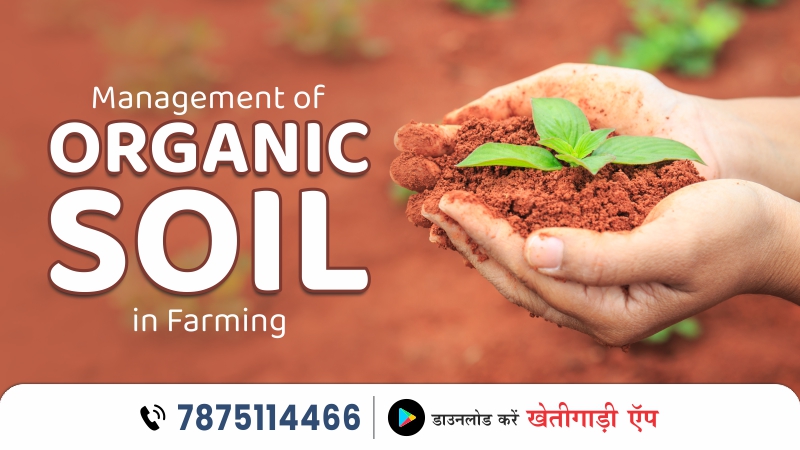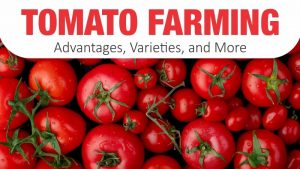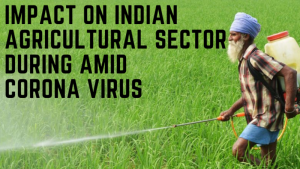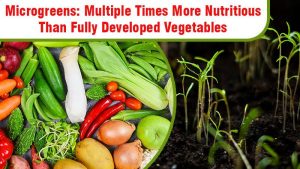One of the biggest issues facing organic farmers is managing soil fertility. In order to determine soil fertility, one must take into account the soil’s physical state, biological “health,” and nutrient content.
The goal of organic farming is to increase or at the very least preserve soil nutrient reserves while also maximizing nutrient recycling and minimizing outside inputs. This seeming tension can only be resolved with expert management. It should be possible to control soil biology, soil structure, and nutrients effectively to produce crops with high yields and healthy animals. Poor management can lead to low harvests, sick animals, and more pollution in the environment.
One of the many production methods that are friendly to the environment is organic agriculture. It has emerged as a workable solution to the problems caused by the chemo-centric agriculture that has been implemented since 1960. Without a question, one of the agricultural output sectors that are expanding the fastest is organic agriculture. It is a type of farming system that focuses on cultivating the soil and growing crops in a way that preserves the soil’s life and health by utilizing organic wastes (such as crop, animal, and agricultural wastes, and aquatic wastes), other biological materials, and helpful bacteria (bio-fertilizers)
Following is a detailed discussion of the many nutrient management and soil health management strategies available in an organic production system:
1. Crops Rotation:
It is a planned arrangement for producing several crops on the same land over a period of two years or more in more or less regular succession. The best crop rotation should be chosen for effective sustainable agriculture. Rotating your crops is crucial. control of weeds, insects, and diseases, and soil fertility management. In any rotation, 30 to 50 percent of the land should be used for legumes. For sustainable agriculture to succeed, mixed cropland, pasture, and livestock system are preferable, if not necessary.
2. Crop Residue:
Crop residues/straws from some of the major cereals and pulses have a tremendous deal of potential for use in India. About 50% of crop leftovers are used as animal feed, with the remaining 50% having great potential for nutrient recycling. After using effective microbial inoculants for appropriate composting, the residues must be handled with sufficient care. While adding agricultural leftovers like wheat and rice straw as-is or inoculating them with fungi species had favorable impacts on crop yields and was significant in the Physico-chemical properties of soil.
3. Organic Manure:
The biological sources for organic manure include the remains of people, animals, and plants. The various effects of organic manure on crop growth and soil productivity are numerous. The uptake of humic compounds or the products of its decomposition that favorably influence plant growth and yield are the direct effects of organic manure on plants. It indirectly improves the functions of the helpful soil microorganisms, which raises the availability of both major and minor plant nutrients.
4. Green Manuring:
In order to increase the physical structure and fertility of the soil, the practice of “green manuring” entails turning or plowing under-decomposed green plant tissues into the soil. Turning in a green crop in order to enhance soil conditions has been a common farming practice since the beginning of time. Wherever practical, green manuring is the primary additional method of incorporating organic matter into the soil. It entails cultivating a crop with a rapid rate of growth and incorporating it into the soil via plow. In particular, if it is a legume crop, which has the potential to fix nitrogen from the air with the aid of its root nodule, the green manure crop gives organic matter as well as additional nitrogen.
5. Vermicompost:
By consuming biological waste and plant leftovers, earthworms make vermicompost, also known as vermicast. It is a technique for creating compost that makes use of earthworms, which typically inhabit soil, consume biomass, and expel it after being digested. 80 tonnes of humus may be consumed annually by 1800 worms, which is the ideal population for one square meter. These are abundant in vitamins, growth hormones, macro- and micronutrients, and immobilized microflora. Vermicompost often has a considerably higher nutritional value than FYM.
6. Compost:
Waste can be turned into useful compost manure by preserving and putting these through a controlled process of anaerobic decomposition. Large amounts of waste material are available as vegetable refuse, farm litter, such as weeds, stubble, bhusa, sugarcane trash, and animal waste in houses and in areas like human and industrial waste. Similar to FYM, compost can be applied to any type of soil and to any type of crop. Before plows or crop planting, hill farmers typically pile the compost in small heaps, then disperse it around the field a few days before it is incorporated into the soil. According to reports, this approach causes nitrogen losses of up to 30–40% as a result of volatilization.
Get information related to tractors, tractor prices, tractor videos, and tractor games; and visit the Khetiguru mobile application for farming-related updates.




